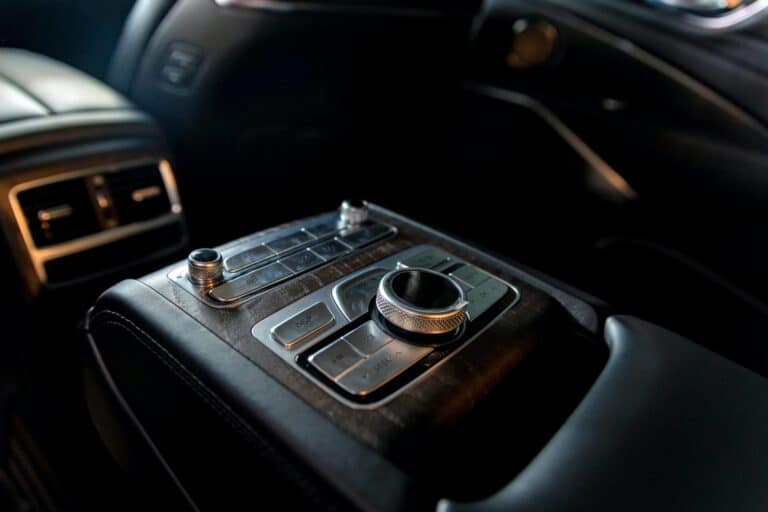RAM 3.73 Vs 4.10 Gears (Must Read This First)
In contemporary times, you can’t talk about pickup trucks with all-around capabilities without mentioning Ram trucks.
These vehicles’ engines, transmission, and other systems give them a range of abilities, including exceptional towing capabilities.
One of the crucial parts of these trucks aiding their performances is the gear ratio.
The gear ratio in trucks affects their performance, so it is necessary to know which suits your vehicle’s purpose.
Therefore, on Ram trucks, which is better, between 3.73 and 4.10 gears?
The purpose for which you acquire a truck determines the gear ratio suitable for it. The 4.10 ratio, being higher, will provide more torque and acceleration hence, greater towing ability than the 3.73 ratio. On the other hand, the 3.73 boast an increased top speed and higher fuel efficiency.
What Are Gear Ratios?
The gear ratio, also called the axle ratio is the number of revolutions by the driveshaft that rotates the axle once.
For instance, a 3.73 ratio implies that for one spin of the wheel, the driveshaft will revolve 3.73 times.
In the rear differential, the driveshaft rotates a cone-shaped gear. This gear is called the pinion, and it meshes with the ring gear to transfer torque to the axles.
The gear ratio is the number of the ring gear teeth divided by the number of the pinion gear’s teeth.
For ease of expression, many people and vehicle websites often refer to the ratio as one number example, 4.10, 3.73, etc.
It is more appropriate to list them as 4.10:1 and 3.73:1 since they are ratios. However, they imply the same thing, and you can use them interchangeably.
Since it is pertinent you know your vehicle’s gear ratio, you must know where and how to get it.
A greater percentage of trucks have some information, including the axle ratio on a sticker on the differential.
Over time though, this tag may wear off due to the differential’s temperature.
You can also confirm what gear ratio your truck has by manual calculation.
This method requires you to get under your vehicle and count the number of teeth on the ring and pinion gears.
You get your axle ratio by dividing the number of teeth on the ring gear by that on the pinion gear.
If you find the method above strenuous, you can ballpark the value of your truck’s axle ratio.
Jack up your truck in neutral, mark the driveshaft and rotate a rear wheel to one full revolution.
The number of spins the driveshaft makes per one tire revolution estimates the vehicle’s axle ratio.
Alternatively, you can use online gear ratio calculators to determine your truck’s gear ratio.
For example, an entry of your engine’s RPM, MPH, and tire diameter will give an estimated value of the axle ratio.
What Are the Differences Between 3.73 and 4.10 Gear Ratios?
The differences between the 3.73 and 4.10 gear ratios are expressed in various aspects of vehicle performances.
For Ram trucks, the differences between these two gear ratios are obvious in the following areas:
#1. Towing Capabilities
Higher gear ratios provide more torque to vehicles than lower ratios.
This provision translates to more strength and greater towing abilities in vehicles with higher gear ratios than lower ones.
Consequently, a 4.10 ratio will offer more towing and hauling strength than a 3.73 ratio.
However, the better towing capacity of the 4.10 ratio comes at the price of more fuel consumption.
However, this is insignificant compared to the performance it boosts.
#2. Acceleration
Acceleration and deceleration are faster on vehicles with 4.10 gear ratios than those with 3.73.
That is due to the higher centripetal acceleration resulting from, the higher spin of the 4.10 gear.
As a result, the revolution per minute (RPM) for 4.10 ratios is also lower than for 3.73 ratios.
However, top speed will be greater in vehicles with 3.73 ratios than those with 4.10 ratios.
The lower 3.73 ratio means that the engines to which it is connected work less for the wheels to rotate.
Further, this results in higher cruise speeds for 3.73 ratio vehicles than 4.10 ratio vehicles.
#3. Torque
A vehicle with a 4.10 gear ratio will have higher torque than one with a 3.73 gear ratio.
Higher torque in vehicles translates to better traction and superior towing capacity.
Aside from having higher torque, there is a more even distribution of the torque to wheels in vehicles with 4.10 gear ratios.
These results are superior traction and control on challenging terrains and adverse weather conditions.
Furthermore, this capability makes vehicles with 4.10 gear ratios more purposeful for off-roading objectives.
#4. Fuel Efficiency
In vehicles with 4.10 gear ratios, the engines work harder to spin the wheels, burning more fuel.
Thus, this results in poorer fuel efficiency in 4.10 vehicles than those with 3.73.
The 4.10 gear ratio provides a higher acceleration, superior torque, and higher towing capacity than the 3.73 gear ratio.
However, the 3.73 takes the lead in fuel economy, top speed, and RPM, outdoing the 4.10 in those areas.
Which Ratio Is Better for My Ram Truck?
Having known the differences between the two gear ratios, your choice depends on some factors related to the differences.
The following are some of the factors that will guide you in deciding the best axle ratio for your truck:
#1. The Purpose of Your Truck
What you want to do with your truck should be the major determinant in your choice of a gear ratio.
Therefore, knowing what you want your truck to do will make it easier to choose a gear ratio.
Trucks intended for off-roading will do well with high gear ratios like 4.10. The reason is the superior traction and control explained earlier.
In addition, the extra power provided by the 4.10 will come in handy when traversing rough and challenging terrains.
If you plan on using your truck for a lot of towing and hauling, your best bet will be a higher gear ratio.
For example, in Ram trucks, 4.10 gear ratios can tow 3,100 pounds more than 3.73 ratios can.
This slight difference can mean a lot when you have very heavy objects to tow.
#2. Gas Price
You should consider the gas prices in your area before concluding on the best gear ratio for your truck.
Fuel efficiency is more feasible on a lower gear ratio if spending less money on gas is your priority.
On the other hand, a higher gear ratio could knock a couple more gallons off your gas because of the harder engine work.
You can either sacrifice torque for more fuel efficiency or vice versa, depending on the financial situation you find yourself in.
#3. Powertrain
With some powertrain, towing and other tough jobs by trucks may not require a higher gear ratio.
On the other hand, some engines already provide enough torque, and it will be wise to save money on gas by going for a lower gear ratio.
For instance, diesel engines provide more torque than gas engines. Therefore, before choosing gear ratios, consider your vehicle’s powertrain.
Conclusion
There are considerable differences between 3.73 and 4.10 gear ratios in aspects like performance and fuel efficiency.
If you rarely use your truck for work and off-roading purposes, the 3.73 ratios will better suit you.
On the other hand, the 4.10 ratio provides more in towing and higher acceleration.






